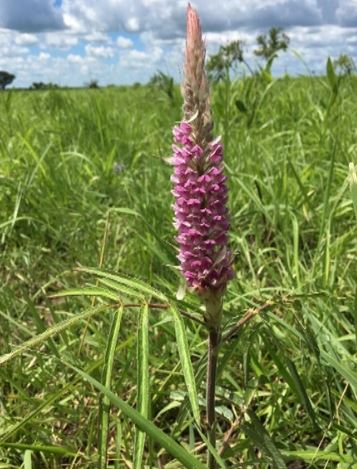| 4. | 4/5 (Shadvirechanshatashritiya Adhyaya) | Sandhaniya Mahakaṣhaya Dravya (herb promote healing and help unite fractured tissues). |
| 5. | 4/38 (Shadvirechanshatashritiya Adhyaya) | Shothhara Mahakashaya Dravya (herb useful in reducing swelling and inflammation). |
| 6. | 4/44 (Shadvirechanshatashritiya Adhyaya) | Angamarda Prasamana Mahakashaya Dravya (herb in relieve body aches and fatigue). |
| 7. | 5/65 (Matrashitiya Adhyaya) | Anu Taila Dravya useful as Tridoshghna (balance all three Doṣas) and Indriyabalaprada (strengthen the sense organs). |
| 8. | 25/40 (Yajjapurushiya Adhyaya) | Agraya Dravya are useful in managing diarrhea (Sangrahika), calming Vata (Vatahara), improving digestion (Deepniya), and enhancing fertility or strength (Vrishya Karma). |
| Charaka Samhita[4] Vimana Sthana |
|---|
| 1. | 8/139 (Rogabhishagajitiya Adhyaya) | Madhur Skanda Dravya useful in Vataja Vikara with Ghrita Taila etc. and Pittaja Vikara with Madhu Sarpi etc. |
| Charaka Samhita[4] Chikitsa Sthana |
|---|
| 1. | 1.1/42 (Abhyaa - Amalakiya Rasayana Pada) | Pratham Brahmarasayana Dravya |
| 2. | 3/182 (Jvara Chikitsa Adhyaya) | Peya Dravya (light rice gruel) is useful in treating fever with diarrhea (Jvara-Atisara). |
| 3. | 3/ 186 (Jvara Chikitsa Adhyaya) | Peya Dravya is useful in fever with burning pain in the anal region (Jvarita Parikartika). |
| 4. | 3/224 (Jvara Chikitsa Adhyaya) | Baladi Ghrita is useful in treating fever (Jvara). |
| 5. | 3/245 (Jvara Chikitsa Adhyaya) | Niruha Vasti Dravya (medicated enema) is helpful in fever (Jvara). |
| 6. | 3/247 (Jvara Chikitsa Adhyaya) | Niruha Vasti Dravya is useful in fever and also improves strength (Bala), sweating (Sveda), and appetite (Anna-Ruchi). |
| 7. | 3/267 (Jvara Chikitsa Adhyaya) | Agravadi Taila is beneficial in cold-type fevers (Shita Jvara). |
| 8. | 4/44 (Raktapitta Chikitsa Adhyaya) | Yavagu Dravya is helpful in bleeding disorders like Raktapitta. |
| 9. | 4/46 (Raktapitta Chikitsa Adhyaya) | Yavagu Dravya is helpful in Raktapitta (bleeding conditions). |
| 10. | 4/85 (Raktapitta Chikitsa Adhyaya) | Ksheera preparations (milk-based) are useful in painful bleeding from the urinary tract (Mutramargagata Raktapitta). |
| 11. | 8/69 (Rajayakshama Chikitsa Adhyaya) | Kvatha preparations (herbal decoctions) are useful in tuberculosis (Yakshma). |
| 12. | 8/107 (Rajayakshama Chikitsa Adhyaya) | Duralabhadhya Ghrita is helpful in managing tuberculosis (Yakshma). |
| 13. | 8/114 (Rajayakshama Chikitsa Adhyaya) | Baladi Ksheera is useful in fever and cough (Jvara-Kasa) associated with tuberculosis. |
| 14. | 9/37 (Unmada Chikitsa Adhyaya) | Kalyanaka Ghrita is useful in mental disorders (Unmada). |
| 15. | 9/42 (Unmada Chikitsa Adhyaya) | Mahakalyanaka Ghrita is effective in treating mental illness caused by all three Doshas (Sannipataja Unmada). |
| 16. | 11/43 (Kshatashina Chikitsa Adhyaya) | Amritprash Ghrita is helpful in tissue-wasting conditions (Kshatashina). |
| 17. | 14/199 (Arsha Chikitsa Adhyaya) | Laajpeya preparation is beneficial in bleeding piles (Raktarsa). |
| 18. | 14/234 (Arsha Chikitsa Adhyaya) | Sunishannaka Changeri Ghrita is useful in painful and inflamed piles, diarrhea (Atisara), and prolapse of rectum (Gudabhramsa). |
| 19. | 18/77 (Kasa Chikitsa Adhyaya) | Peya Dravya is helpful in dry cough caused by Vata (Vataja Kasa). |
| 20. | 18/ 101 (Kasa Chikitsa Adhyaya) | Sthiradi Ksheerapaka is beneficial in cough (Kasa), fever (Jvara), and burning sensation (Daha). |
| 21. | 19/23 (Atisara Chikitsa Adhyaya) | Pramathya preparations are useful in diarrhea (Atisara). |
| 22. | 19/26 (Atisara Chikitsa Adhyaya) | Sangrahi Gana Dravya are helpful in stopping diarrhea (Atisara). |
| 23. | 19/54 (Atisara Chikitsa Adhyaya) | Yavagu Manda is useful in Pitta-type diarrhea (Pittaja Atisara) after complete fasting (Purna Langhana). |
| 24. | 23/213 (Visha Chikitsa Adhyaya) | Paramagada is effective in poisoning caused by Vishambhar and similar toxins. |
| 25. | 23/245 (Visha Chikitsa Adhyaya) | Amrita Ghrita is useful in treating all types of poisoning (Sarva Visha). |
| 26. | 24 /149 (Madatyaya Chikitsa Adhyaya) | Shita preparations are helpful in alcohol-related disorders caused by Pitta (Pittaja Madatyaya). |
| 27. | 24/165 (Madatyaya Chikitsa Adhyaya) | Kvatha preparations are beneficial in alcohol-related disorders caused by Kapha (Kaphaja Madatyaya). |
| 28. | 25/75 (Dvivraniya Chikitsa Adhyaya) | Malham preparations are useful in wound pain (Vrana Shula). |
| 29. | 26/88 (Trimarmiya Chikitsa Adhyaya) | Trayushnadi Ghrita is helpful in heart diseases caused by Vata (Vataja Hridaroga). |
| 30. | 30/280 (Yonivyapada Chikitsa Adhyaya) | Stana Lepa preparations are useful in treating breast milk-related disorders (Guru Stanya Dosha). |
| Charaka Samhita[4] Siddhi Sthana |
|---|
| 1. | 7/13 (Vastivyapadasiddhi Adhyaya) | Vasti preparation is useful in treating complications of excessive Vasti therapy (Vasti Vyapada – Atiyoga). |
| 2. | 10/19 (Vasti Siddhi Adhyaya) | Vatanashak Vasti Dravya helps in reducing Vata-related disorders. |
| 3. | 10/38 (Vasti Siddhi Adhyaya) | Vasti preparation is useful in treating complications of Vasti therapy (Vasti Vyapada – Jivadan). |
| 4. | 12/15-2 (Uttarvasti Siddhi Adhyaya) | Erandmuladi Yapan Vasti is useful in managing chronic piles (Chira-Arsa). |
| 5. | 12/15-5 (Uttarvasti Siddhi Adhyaya) | Pratham Baladi Yapan Vasti helps in quickly restoring strength (Sadhya Bala Janana) and acts as a rejuvenator (Rasayana). |
| 6. | 12/15-8 (Uttarvasti Siddhi Adhyaya) | Hrisva Panchmuladi Yapan Vasti is helpful for weak patients suffering from irregular fever (Visham Jvara). |
| 7. | 12/15-11 (Uttarvasti Siddhi Adhyaya) | Salaparnyadi Yapan Vasti is also beneficial for weak patients with irregular fever (Visham Jvara). |
| Sushruta Samhita[3] Sutra Sthana |
|---|
| 1. | 19/29 (Vranit Upashaniya Adhyaya) | Rakshogna Dravya useful in Vrana Ropana (wound healing) on head application. |
| 2. | 36/26 (Mishraka Adhyaya) | Ropana Ghrita Dravya useful in Vrana Ropana (wound healing). |


 ©
© 